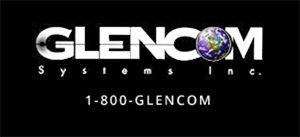
Proven Signs of Success
Review case studies from a variety of satisfied customers.
Top Producer of Ink and Pigment Materials Converts to Virtual Environment
Situation –A world-renowned provider of printing supplies was planning to relocate its primary, worldwide data center from one collocation facility to another. As part of the relocation, the company was also looking to consolidate their data center. They needed a precise strategy to prepare for the virtualization of many of their 225 physical servers while ensuring the smooth transition of the remaining machines to their newly designed environment.
Solution – The Glencom Systems team designed a brand new VMware server farm for the client, virtualizing approximately 100 of their physical machines during the process. The remaining 125 servers were moved by Glencom Systems to the new location and set up in the newly designed data center.
In addition to the virtualization project, Glencom Systems also completed an upgrade of the supplier’s network to an all-Cisco arrangement, which includes dual core Nexus 7000 and Catalyst 4900 Series Switches for top-of-rack deployments. The network is interconnected via multiple 10GB Ethernet uplinks, and the client is able to manage the new data center remotely, down to KVM devices and power monitoring.
Our Managed Services team continues to oversee the data center, which includes, but is not limited to, Network (switches / router / firewall), Storage (EMC VNX SAN / Brocade SAN Switches) and Physical changes (new hardware / old hardware removal / cabling) that may be required over time.
Global Leader in Animal Health and Performance Products Relocates Headquarters
Situation – Fearing that relocating would sacrifice too much time and productivity, this manufacturer of specialty animal products searched for a solution to efficiently move more than 120 people to a new office location. They wanted to update their IT systems, configure their computer room and secure their new facility without having to suspend business for an extended period of time.
Solution – After the customer’s offices closed at 3 p.m. on a Friday afternoon, Glencom Systems was able to come in and quickly complete the conversion process over the weekend. This allowed the company to reopen its doors to employees at 7 a.m. on Monday morning with full operational capabilities. Glencom Systems assumed responsibility for all IT aspects of the transition, conducting overall project management tasks and coordinating the roles of their IT staff with those of the client’s other chosen vendors.
Glencom Systems played an active and integral part in the corporate shift – from start to finish. Building new system components in parallel to the project timeline and prior to the move, those components were able to be activated as soon as the old systems were disconnected. Glencom Systems also collaborated with movers to transport more than 50 servers and other IT contents to the new location, where they handled the configuration of every component – from the design, build and furnish of the complex computer room down to the installation of telco circuits.
Glencom constructed the computer room with several Intermediate Distribution Frames (IDFs) and proposed an innovative cable plant, supervising the contractor who implemented the plan. The data center was designed to the latest industry standards and technologies, and configured with Cisco core network of Nexus platform switches and Liebert CRV In-row Cooling CRAC units along the perimeter.
Since security was of the utmost importance, Glencom Systems oversaw the work done to install physical access control, video surveillance and a burglar fire alarm with fire protection in all IT rooms. The facility was designed to operate in a total “lights-out” environment using KVM switches and power strips. The customer is now able to manage servers remotely from any location in the world – down to disconnecting power to the outlets that feed the machine. This software also allows the user to monitor the power consumption of each server, helping to determine a true total cost of ownership and more accurately anticipate hardware refreshes.
